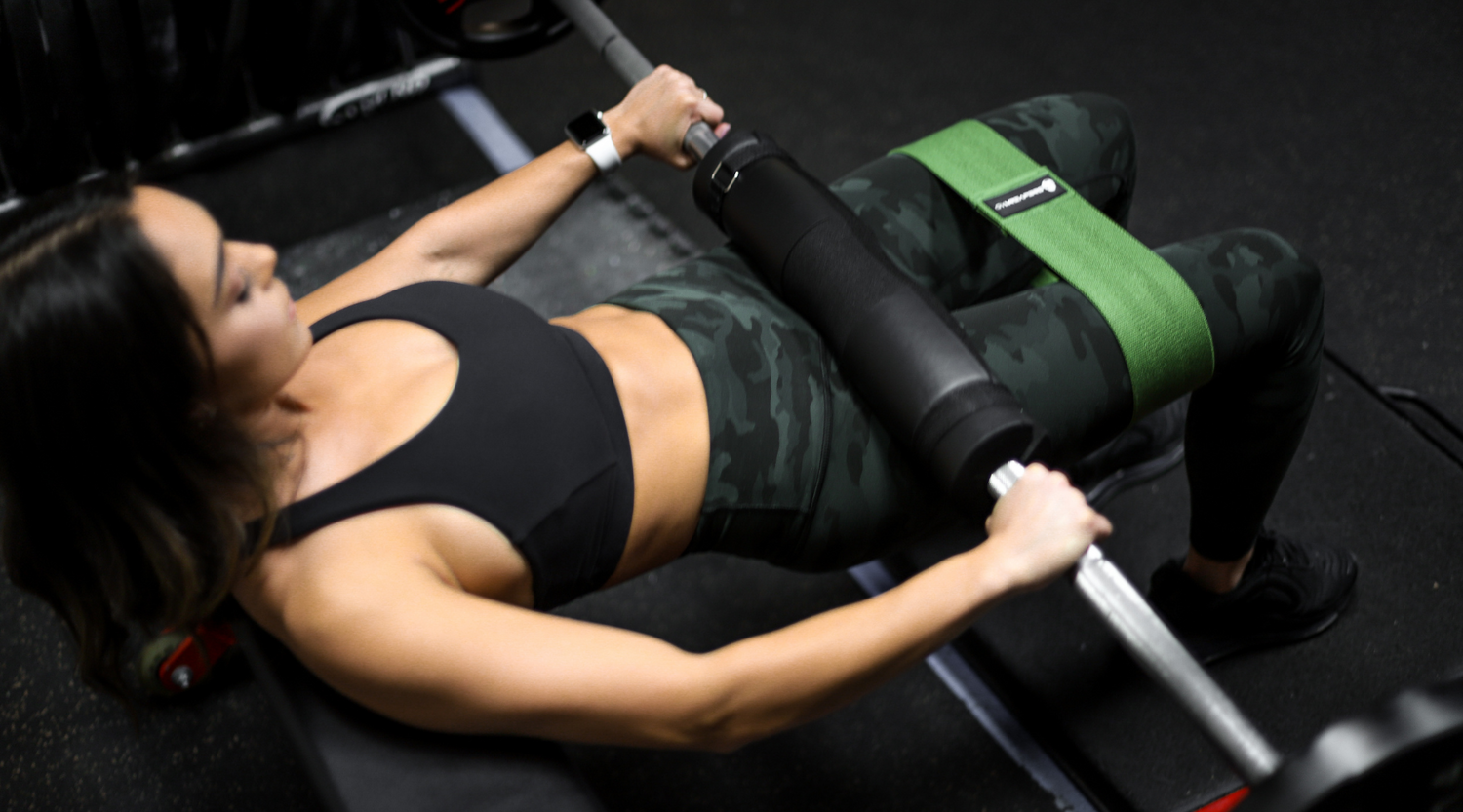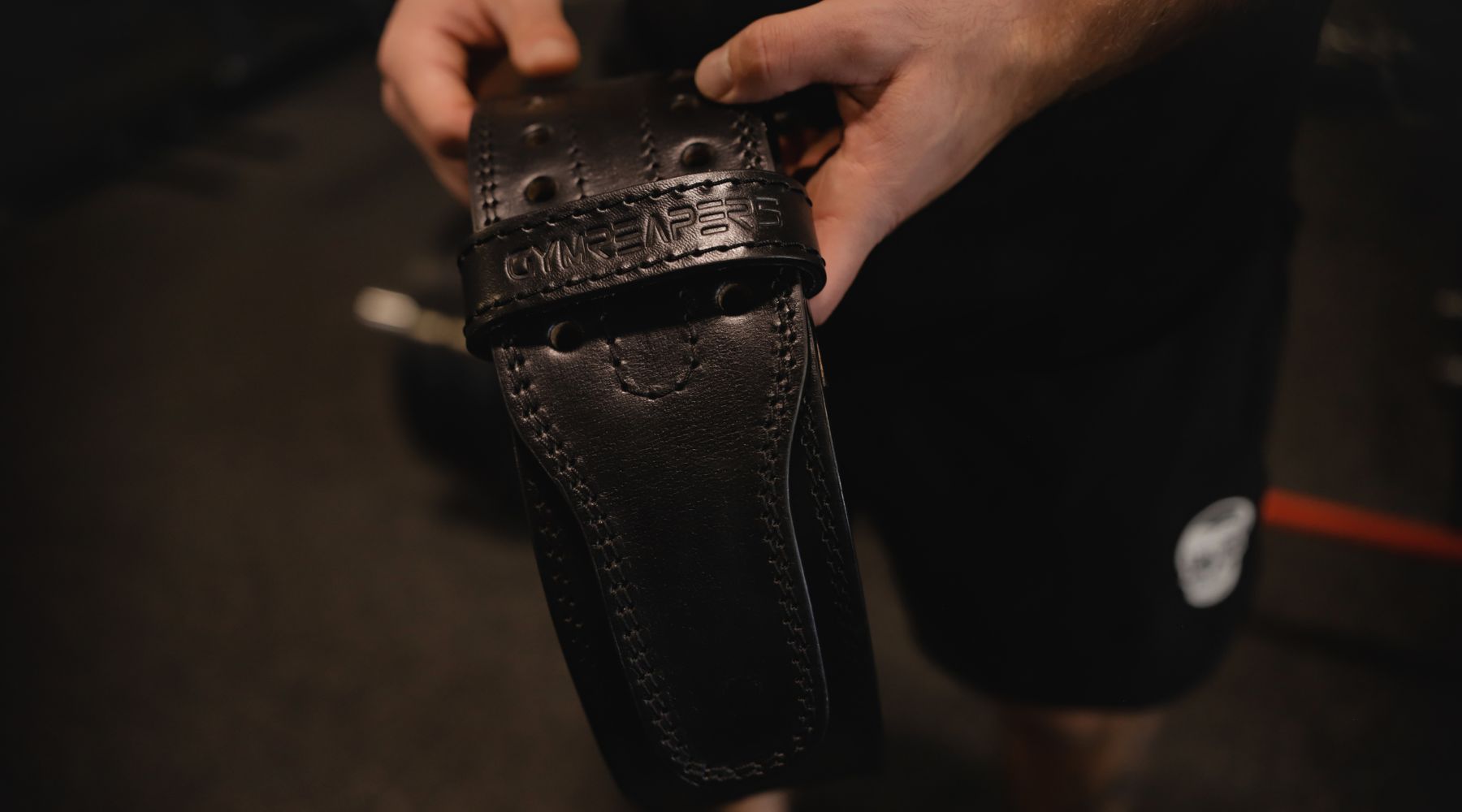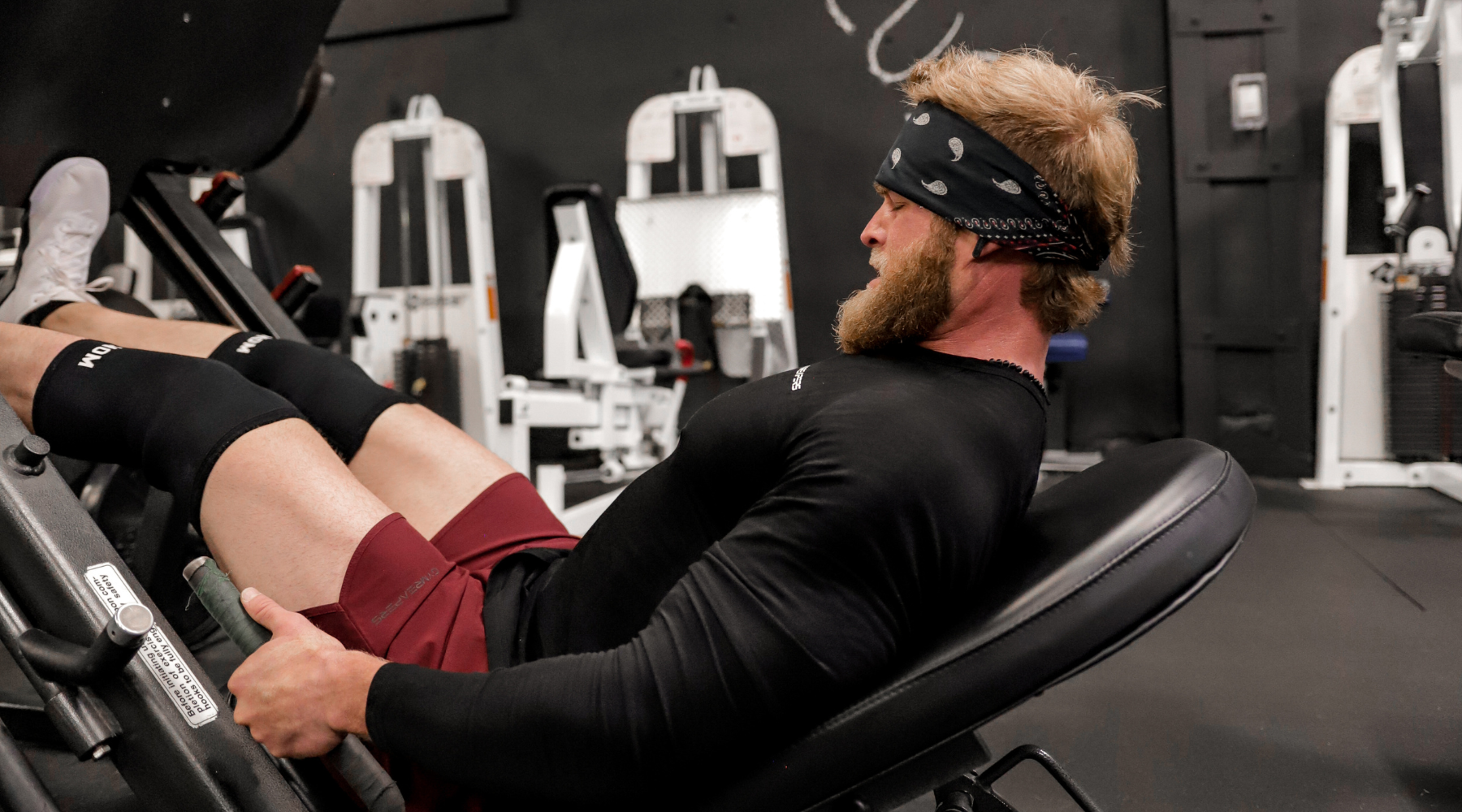As a personal trainer with more than eight years of experience, my job is to provide the best possible training guidance and keep my clients safe. One common question I’ve received from clients is if they should use a lifting belt for hip thrusts.
Wearing a lifting belt for hip thrusts and other compound exercises is not mandatory. Your priorities should always be to use weights you can control, brace your midsection, train with proper form, and pay attention to aches and general discomfort that may develop during training.
With that said, a lifting belt can be beneficial, and using it intelligently in your training can provide the extra support you need to minimize the injury risk.
Key Takeaways
- Hip thrusts engage a range of core muscles, including the glutes (maximus, minimus, and medius), erector spinae, transverse abdominis, and rectus abdominis.
- Wearing a lifting belt during hip thrusts can improve intra-abdominal pressure (IAP), supporting a strong spine position and providing a psychological boost.
- If you’re interested in wearing a belt for hip thrusts, you must learn how to wear it correctly and what potential drawbacks it could bring.
Should You Wear A Lifting Belt For Hip Thrusts?
You don’t necessarily have to wear a lifting belt during hip thrusts, especially if you haven’t done the exercise for long and are still working on your technique. A belt could be beneficial, but lacking expertise could mean it gets in the way more than it helps.
For example, let’s say you’re new to hip thrusts and are still learning the nuances surrounding the set-up, range of motion, and proper bracing. In such a case, wrapping a thick belt around your waist could get in the way of engaging your midsection, training through a full range of motion, and setting yourself up correctly.
A scenario where wearing a weightlifting belt for hip thrusts would make sense is when the trainee has sufficient experience with the exercise and understands how to perform it correctly.
Knowing how the exercise works and what you need to do to perform it correctly would open up space for additional ways to optimize your performance. One such is using a lifting belt.
For instance, if someone has done the exercise for at least a few months and routinely thrusts 300, 400, or even 500+ lbs, wearing a belt could provide additional rigidity, contribute to a healthy spinal position, and minimize the injury risk.
Core Involvement In The Hip Thrust Explained

As its name suggests, the core consists of all the muscle groups in the central part of your body. Many of these muscles play an integral role during hip thrusts. Here are some prominent examples:
Gluteus Maximus
The gluteus maximus plays the crucial role of producing hip extension with the assistance of the hamstrings. It is also necessary for hip stability and a healthy spinal position.
According to EMG data, the peak contraction in the upper and lower glutes is significantly higher during hip thrusts than during back squats.
Specifically:
“The barbell hip thrust elicited significantly greater mean (69.5% vs. 29.4%) and peak (172% vs. 84.9%) upper gluteus maximus, mean (86.8% vs. 45.4%) and peak (216% vs. 130%) lower gluteus maximus, and mean (40.8% vs. 14.9%) and peak (86.9% vs. 37.5%) biceps femoris EMG activity than the back squat.”
Gluteus Medius & Minimus
Along with the gluteus maximus, the medius and minimus comprise the gluteal region and play a crucial role in hip thrusts.
The medius and minimus are smaller muscles that don’t play the same active role as the glute max but are still important because they provide hip stability, which is crucial for safe and heavy hip thrusts.
Erector Spinae
The erector spinae muscles run along both sides of the spine. Their primary function is to extend the back and support a rigid torso position, which is crucial during hip thrusts.
Engaging the erector spinae keeps the spine in a strong position, keeping the actual movement to hip flexion and extension.
Transverse Abdominis
The transverse abdominis (TA) is a deep core muscle that wraps around the trunk like a belt, providing torso rigidity. Its primary function is to flex isometrically and contribute to a stable position for the upper body and spine.
Unlike some core muscles, the TA attaches to the iliac crest (the upper portion of the pelvic bone) and contributes to hip stability.
Internal and External Obliques
The internal and external obliques run along both sides of the rectus abdominis (six-pack abs) and serve an essential isometric (static) function during hip thrusts.
Your obliques’ primary function is to rotate your torso, but these muscles are also necessary for overall rigidity during compound movements. Flexing the obliques causes them to draw the ribcage closer to the pelvis and provide stability.
Rectus Abdominis
The rectus abdominis, also known as the six-pack abs, is the final link in the chain of core muscles involved in the hip thrust.
Its primary function is to pull the chest down by shortening the distance between the ribcage and pelvic bone, thus preventing lower back arching. Engaging the abs before hip thrusts is necessary for a solid torso position, spinal stability, and a neutral lower back.
A common error trainees make is to neglect ab activation and drive their hips too high, causing the lower back to arch. Doing so can lead to unnecessary stress, resulting in discomfort or pain.
- Related Article: Wearing a Lifting Belt for Leg Press: Should You Do It?
Pros Of Wearing A Lifting Belt For Hip Thrusts

1. It Improves Intra-Abdominal Pressure
A lifting belt provides torso support by improving intra-abdominal pressure (IAP). An increase in IAP further contributes to torso rigidity by acting synergistically with core muscles responsible for stability (erector spinae, transverse abdominis, rectus abdominis, etc.).
The increase in IAP largely depends on how well the trainee uses the belt, what belt they use (e.g., a thin weightlifting belt vs. a thick powerlifting one), and what exercise they use the belt on.
For instance, a belt appears to increase IAP by around 15 percent for deadlifts and as much as 40 percent for squats.
Related:
2. It Can Support Your Spine And Reduce Injury Risk
Wearing a belt can be a fantastic way to limit spinal flexion and extension, thus reducing the shear stress on the spine.
First, as discussed above, wearing a belt can increase IAP, compressing the contents of the abdominal cavity and promoting stability. Second, according to some EMG data, a lifting belt can lead to slightly better spinal erector activation.
When combined, these effects could result in a more stable spine position, even when using heavy weights.
3. It Provides a Psychological Boost
A lifting belt could provide a significant psychological boost for trainees and a sense of security. As a result, lifters could be more assertive in their training, attempt to produce overload more frequently, and ultimately get better results.
The psychological boost is likely one reason why almost everyone can lift more weight (or the same weight more quickly) when wearing a lifting belt.
Of course, that benefit can morph into an issue in some cases. We will talk about it in the cons section below.
Cons Of Wearing A Lifting Belt For Hip Thrusts
1. It Can Alter Movement Mechanics
Wearing a belt can affect your starting position, especially on movements like the deadlift, and alter movement mechanics for better or worse.
In the case of hip thrusts, incorrect placement could do more harm than good. For instance, placing the belt too low on your waist could cause it to dig into your flesh and affect your range of motion.
2. It Can Lead to Over-Reliance
Using a lifting belt for everything can turn it into a crutch, making you unable or unwilling to lift heavy without it.
Avoid such potential issues by setting clear rules for when to wear a lifting belt and when to go beltless. For example, skip the belt when lifting less than 70-75 percent of your 1RM.
3. You Might Become Overconfident
Most people feel more secure and can lift more weight with a belt, which can lead to overconfidence and overestimation of one’s abilities. As a result, eager trainees could attempt to progress more quickly, only for their technique to break down, increasing the injury risk.
How Should You Wear A Belt For Hip Thrusts?
You should place the lifting belt at mid-stomach, and you don’t want it to be too tight. Wrapping the belt too tightly would obstruct your breathing, preventing you from increasing IAP and possibly causing you to become winded, especially on a high-rep set.
A good way to find the correct tightness is to put the belt on while standing tall and attempt to take a deep breath into your belly. If you can’t do that, the belt is probably too tight, and you’ll have even bigger issues with your breathing and bracing when you sit down for hip thrusts.
A mid-stomach belt position is generally ideal because the risk of it altering movement mechanics is small. The belt is not likely to dig into your torso or hips, which could otherwise cause pain and affect your range of motion.
Lifting Belts vs. Hip Thrust Belts For Hip Thrusts
You can wear two types of belts for hip thrusts: a traditional lifting belt, such as those offered by Gymreapers, and a hip thrust belt, like the Bella Booty one.
Hip thrust belts are slightly different. Instead of wrapping the belt around your abdomen for additional support and torso rigidity, a hip thrust belt provides resistance for the movement.
The way a hip thrust belt works is relatively simple.
Sit down as you would for regular hip thrusts and place the belt over your hip crease. Loop the belt straps over a pair of dumbbells or whatever weights you have available, and fasten them in place with the Velcro. Close the belt and start your set.
Hip thrust belts can be helpful for people who train at home and don’t have access to a barbell and weight plates. The overloading potential isn’t as great, but you can still do a challenging workout, especially if you have a pair of heavy dumbbells or kettlebells.
Examples of Athletes Using Lifting Belts For Hip Thrusts
Kerigan Guillen
Kerigan is an IFBB pro who doesn’t shy away from heavy lifting. She uses a lifting belt for most movements, but the hip thrust isn’t one of them.
Esperanza Fonseca
Esperanza Foncesa is an amateur bodybuilder with aspirations of going pro one day. As you can see, she enjoys heavy lifting but prefers to do her hip thrusts beltless. Here is a video of her hitting 515 lbs for two sets of 5 reps.
Matt Ogus
Matt is a bodybuilder, physique coach, and former Youtuber. He first gained popularity in 2011 and has since amassed a substantial following across social media platforms.
He’s been known to use a belt on many exercises but prefers to go beltless for hip thrusts. Here is a video of him hitting a lifetime PR of 750 lbs for 5 reps at 178 lbs body weight.
Savi Win
Savi is an online coach and nutritionist who enjoys dabbling in powerlifting training. She uses a belt on some movements, such as squats, but performs hip thrusts beltless. Here is a video of her going after some Christmas gains with beltless hip thrusts.













Leave a comment
All comments are moderated before being published.
This site is protected by hCaptcha and the hCaptcha Privacy Policy and Terms of Service apply.